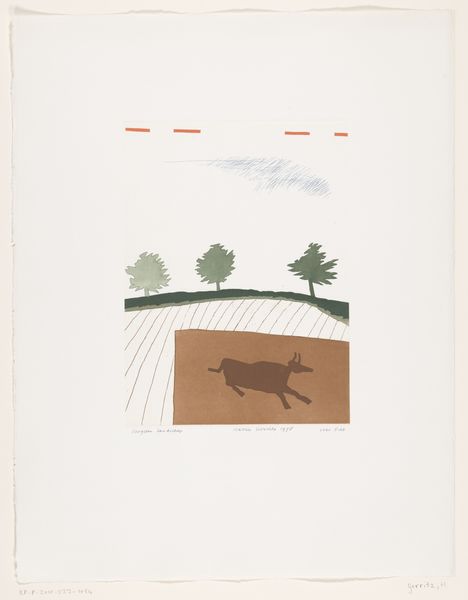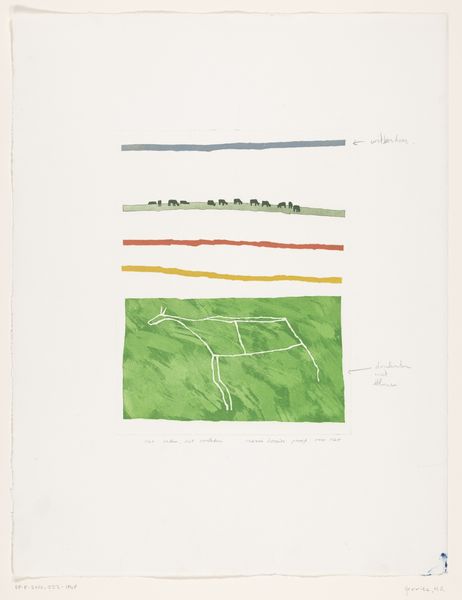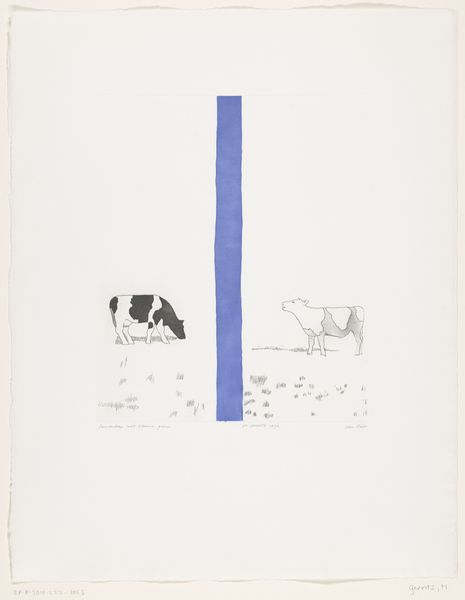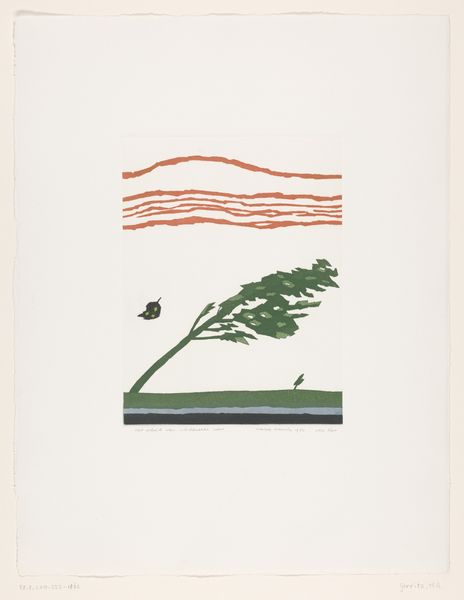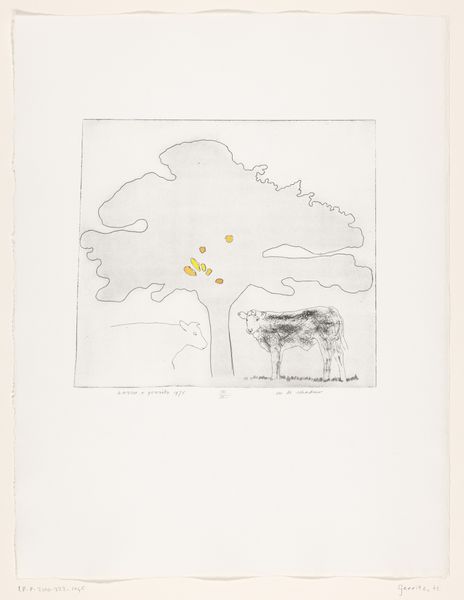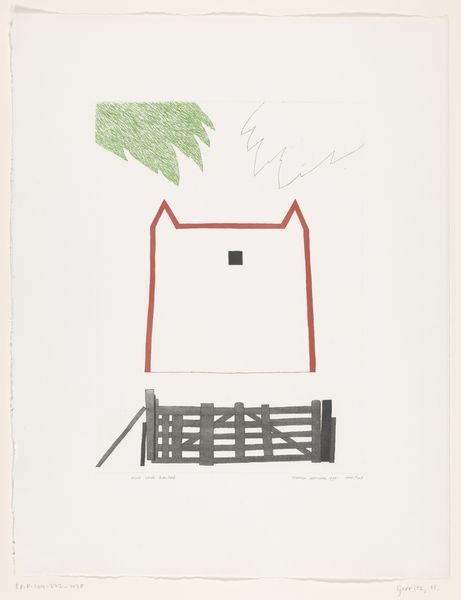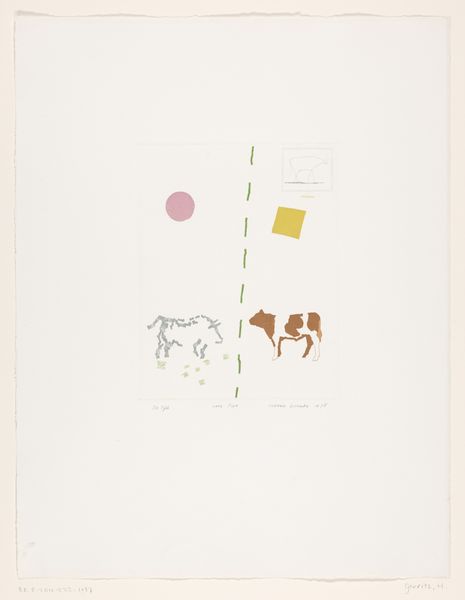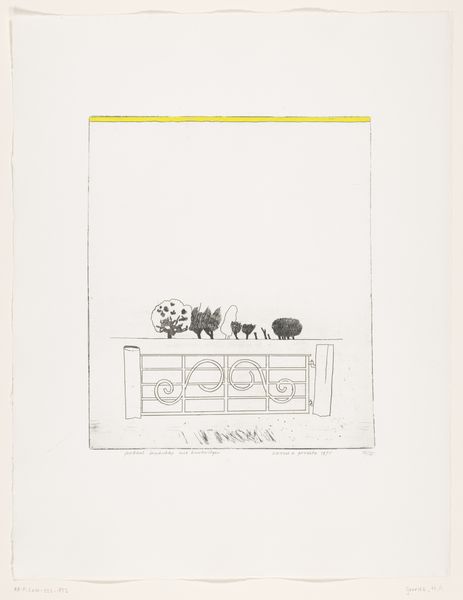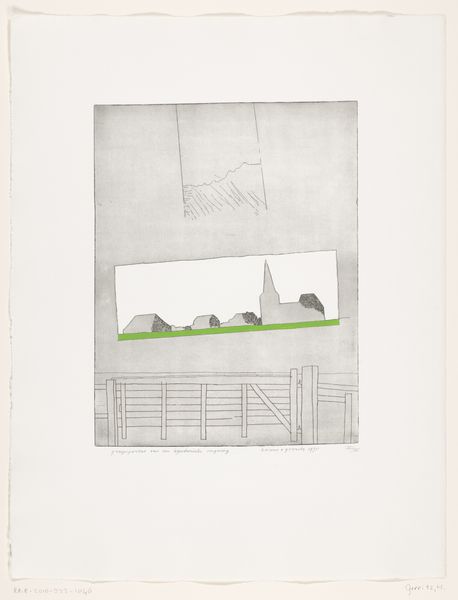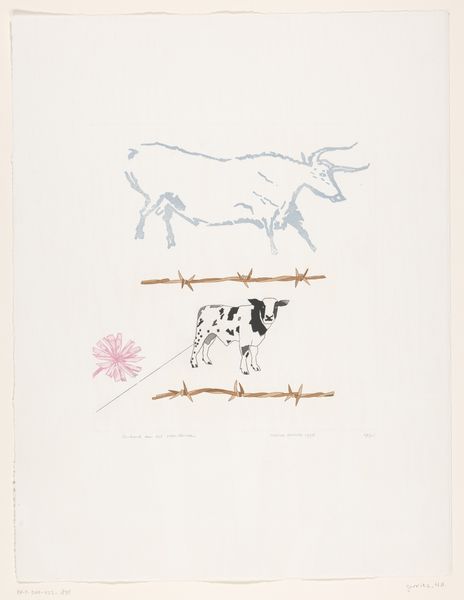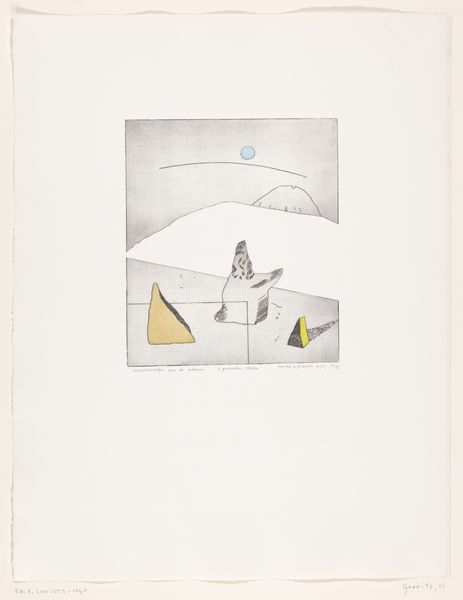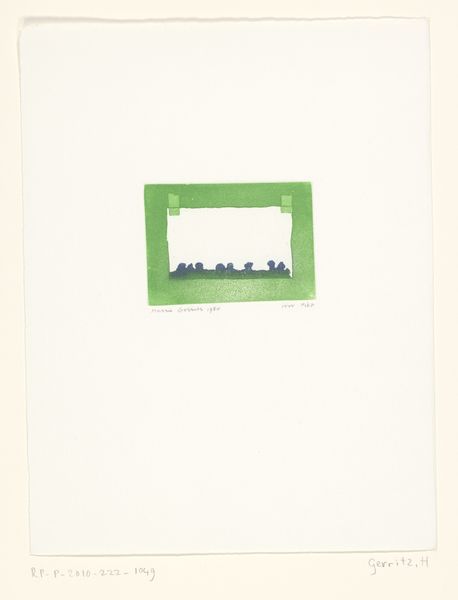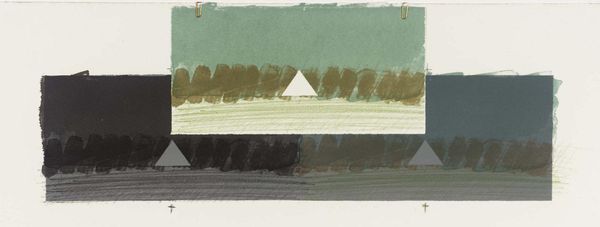
#
contemporary
# print
#
landscape
Dimensions: height 658 mm, width 507 mm, height 365 mm, width 300 mm
Copyright: Rijks Museum: Open Domain
Editor: Okay, next up is "Sunlights and Approaching Storm" by Harrie A. Gerritz, a print from 1980. It's deceptively simple; the blocky shapes and flat colors give it this almost naive quality, but the atmosphere is really evocative. What's your read on this, how do you interpret it? Curator: It’s interesting you pick up on that tension. On one hand, the pastoral scene seems familiar. On the other hand, Gerritz flattens and abstracts the image. He's offering us not just a landscape, but a commentary on the landscape as a cultural construct. Think about how the Dutch landscape tradition, especially in the Golden Age, was tied to notions of national identity. Does this image uphold or challenge those notions, and how do you know? Editor: I see what you mean! The flat shapes feel... manufactured, less about nature itself and more about an *idea* of nature. It definitely disrupts the romantic ideal. The way he’s fragmented the picture gives me a sense of almost cartoonish reality, if that makes sense. The scene depicted isn't as it is in the real world but seems slightly skewed, almost fake. I feel as though the colors could potentially lean towards an artificial hue too, which could imply themes that go far beyond idyllic lands. Curator: Exactly! Gerritz created this work during a time when there was much debate about land usage and cultural expectations. Think of the agricultural changes taking place in the late 70s/early 80s; what the “right” or accepted way of creating imagery surrounding this industry should be; and what these expectations may highlight or ignore about contemporary agricultural practices. How might the flattening and simplification of the scene comment on those real-world events and/or sentiments? Editor: Wow, I never would have picked up on all of that just by looking at it. Now I understand it has meaning beyond just depicting a landscape. Thanks! Curator: No problem! It’s a good reminder that even seemingly straightforward art can hold layers of complex cultural and historical meaning.
Comments
No comments
Be the first to comment and join the conversation on the ultimate creative platform.
